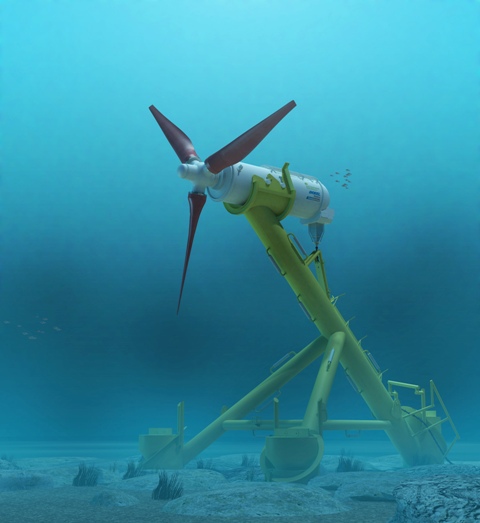
A site has been selected near Newport, Ore., for a new wave energy test program, the first of its kind in the United States and the closest one this side of Scotland.
The final decision on the site was made by officials from the Northwest National Marine Renewable Energy Center , which is a collaborative research effort of Oregon State University and the University of Washington that was begun in 2008.
The selection follows two years of discussions with the Oregon coastal community, fishermen, state agencies, wave energy developers and scientists. It is within Oregon territorial waters, near the Hatfield Marine Science Center and close to onshore roads and marine support services.
Public comments on the proposal are still being sought, officials said.
The site will be about one square mile in size, two miles northwest of Yaquina Head on the central Oregon coast, in water about 150-180 feet deep with a sandy seafloor. It is exposed to unobstructed waves that have traveled thousands of miles across the Pacific Ocean. The facility is being funded by the state of Oregon and the U.S. Department of Energy.
“If all of our plans and permits are approved, we hope to have the test facility available for wave energy developers to use by this fall,” said Annette von Jouanne, an OSU professor of electrical engineering and leader with the university’s wave energy research programs.
The site will not only allow testing of new wave energy technologies, but will also be used to help study any potential environmental impacts on sediments, invertebrates and fish. In order to simplify and expedite ocean testing, the facility will not initially be connected to the land-based electrical grid.
Testing will be done using a chartered vessel or stand-alone buoy along with the wave energy devices, and most of the technology being tested will produce its energy through the up-and-down motion of the waves. Some devices may be very large, up to 100 feet tall and with a diameter of up to 50 feet, but mostly below the water line.
“The site will not necessarily be off limits to other ocean users,” said Kaety Hildenbrand, a marine fisheries faculty member with Oregon Sea Grant. “As part of our continuing outreach to the coastal community, we plan to have a series of dialogues with safety experts and ocean users to discuss allowable uses.”
The selection of this site and creation of the test facility will be another important step forward for the future of wave energy in the United States, officials said.
The Pacific Northwest has one of the best wave energy resources in the world, and studies done there on both technology and environmental impacts will help move this emerging energy source closer to commercial production.



